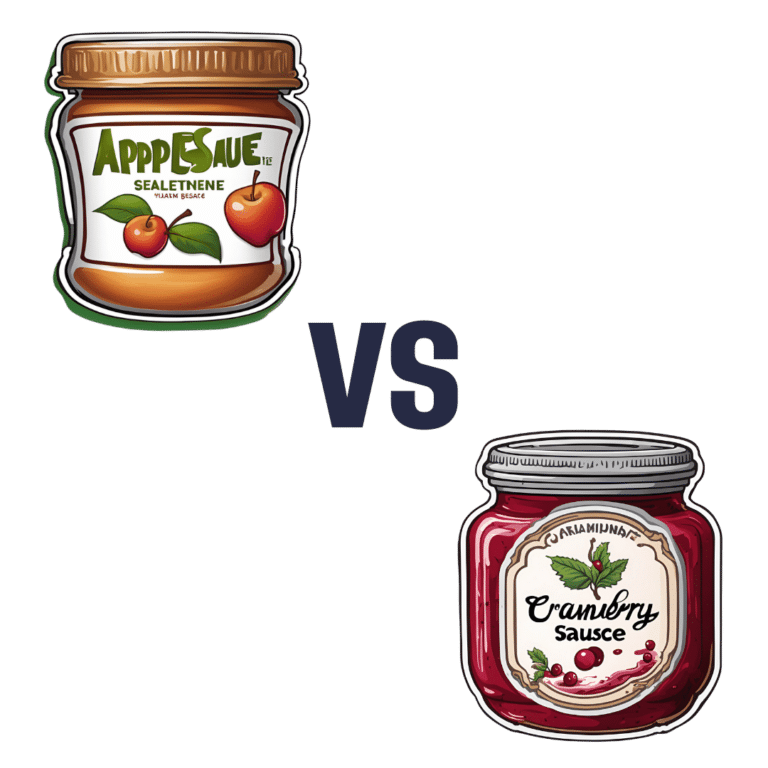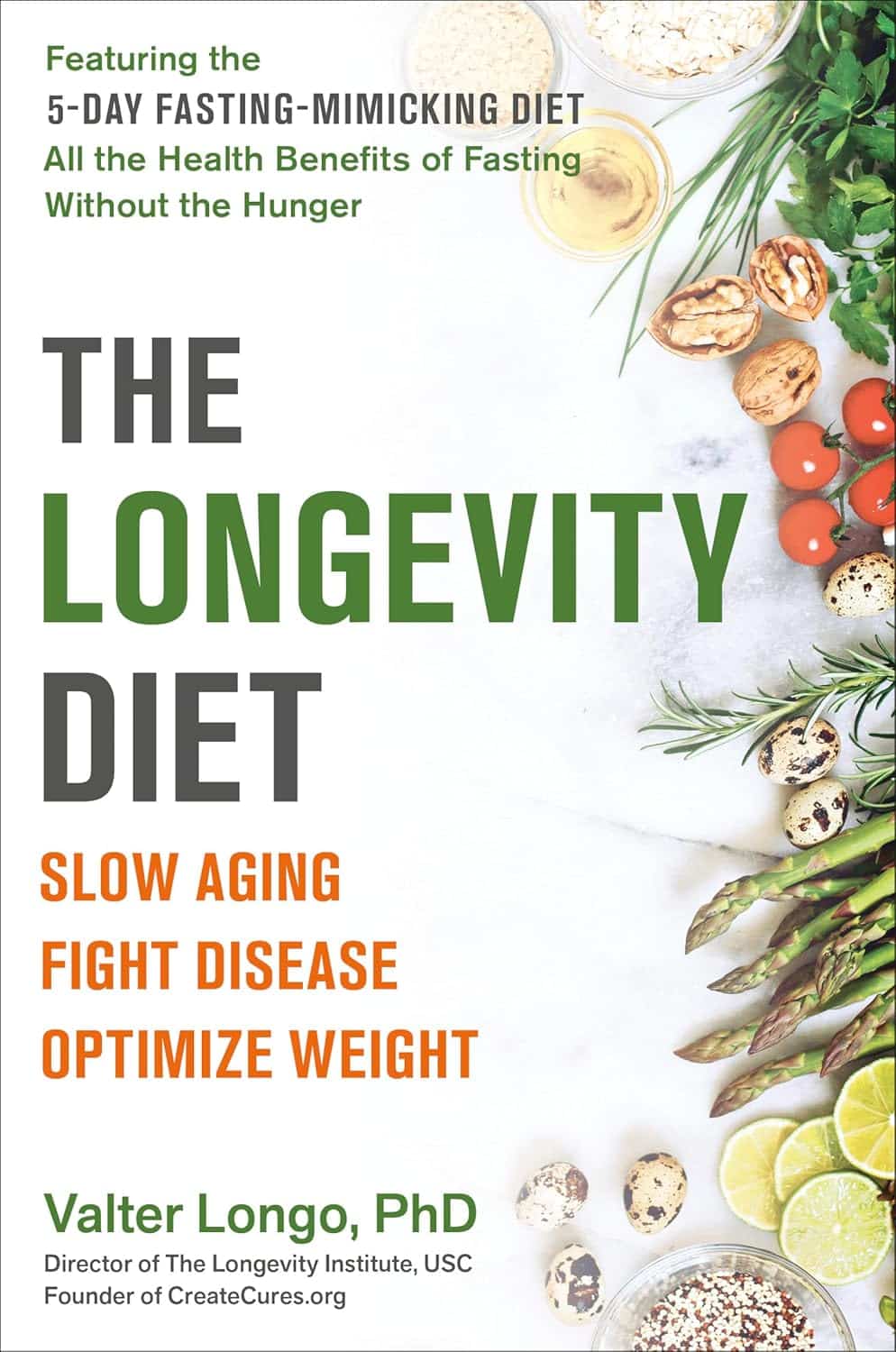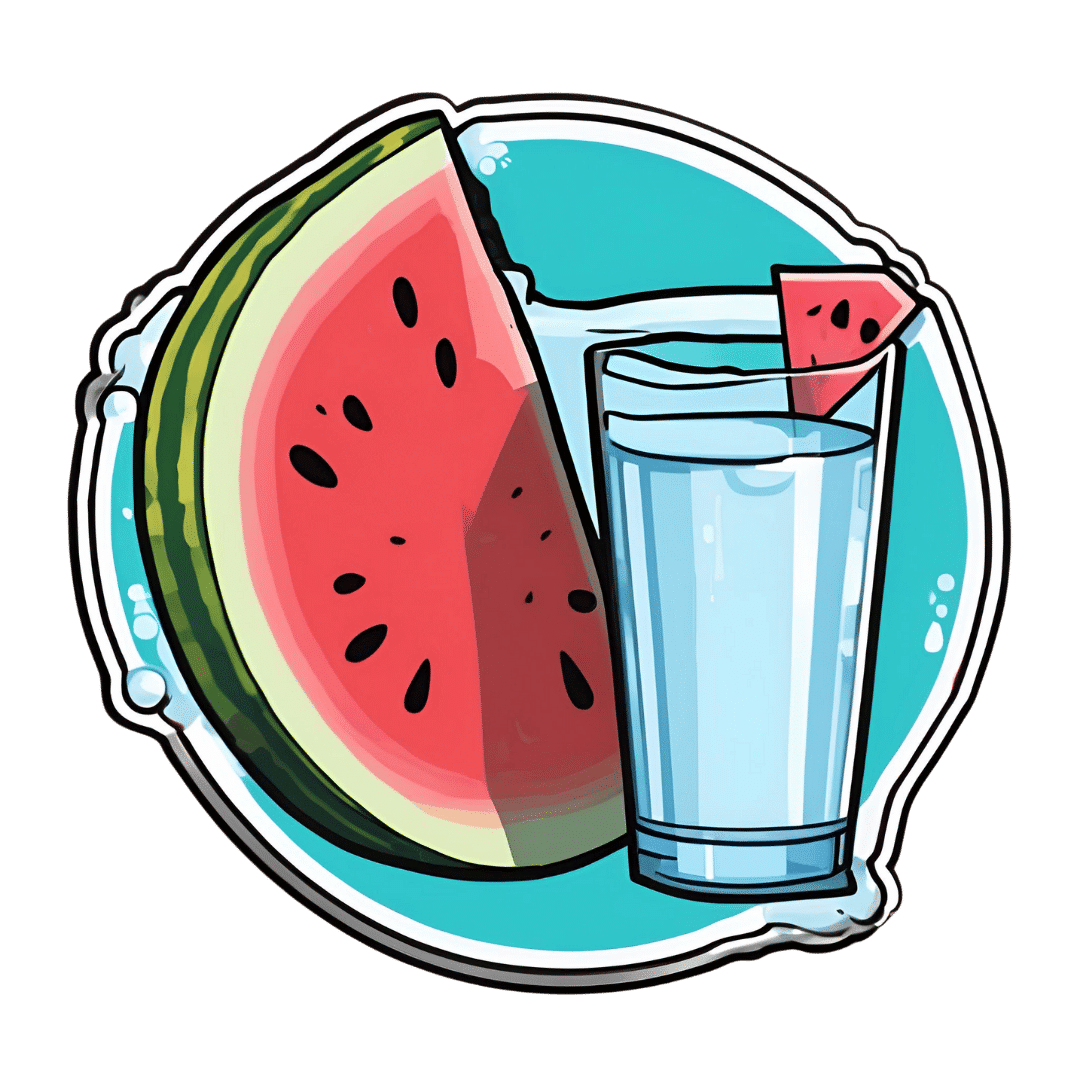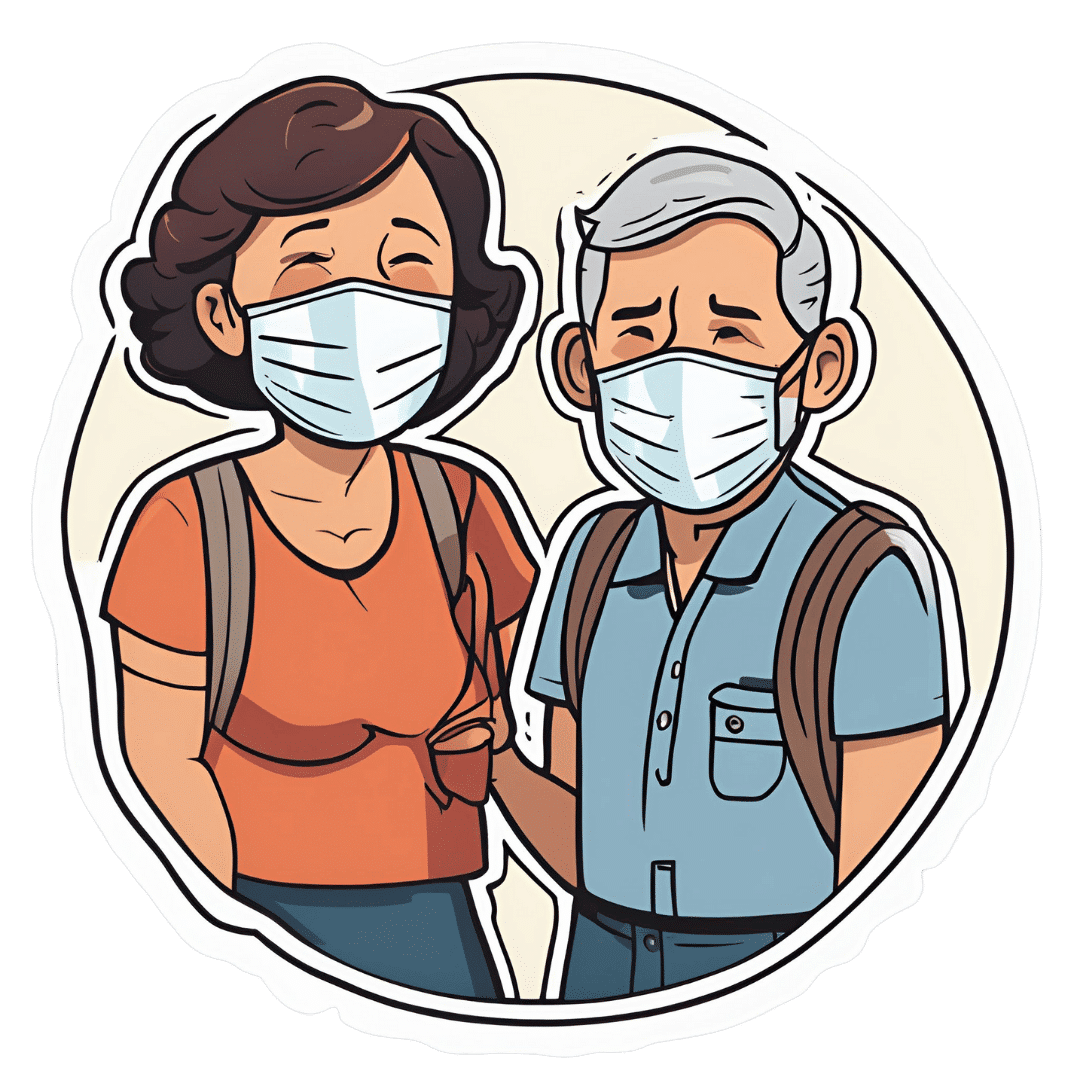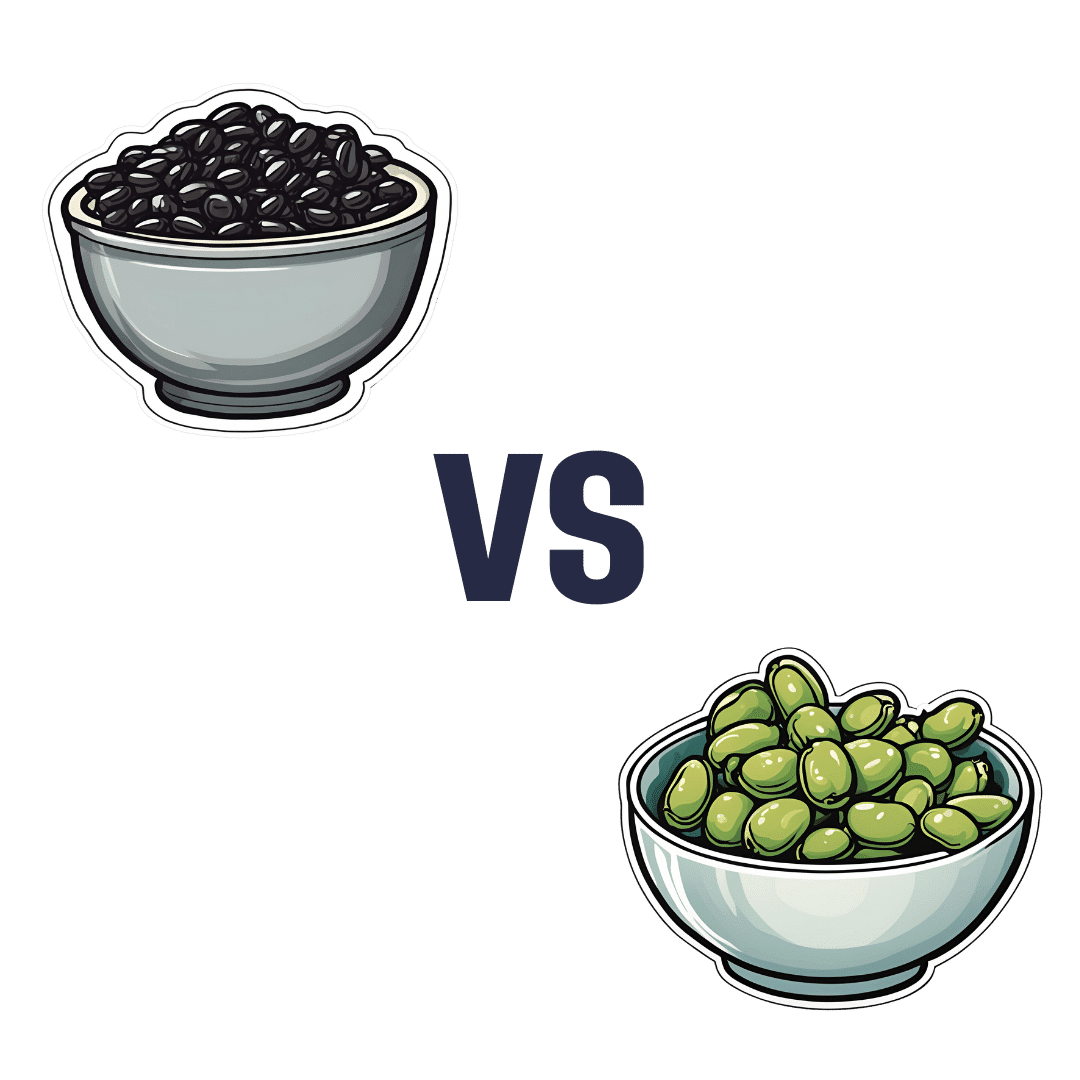
Black Beans vs Fava Beans – Which is Healthier?
10almonds is reader-supported. We may, at no cost to you, receive a portion of sales if you purchase a product through a link in this article.
Our Verdict
When comparing black beans to fava beans, we picked the black beans.
Why?
In terms of macros, black beans have more protein, carbs, and notably more fiber, the ratio of the latter two also being such that black beans enjoy the lower glycemic index (but both are still good). All in all, a clear win for black beans in this category.
In the category of vitamins, black beans have more of vitamins B1, B5, B6, E, K, and choline, while fava beans have more of vitamins A, B2, B3, B9, and C. That’s a marginal 6:5 win for black beans, before we take into account that they also have 43x as much vitamin E, which is quite a margin, while fava beans doesn’t have any similarly stand-out nutrient. So, another clear win for black beans.
When it comes to minerals, black beans have more calcium, copper, iron, magnesium, phosphorus, and potassium, while fava beans have more manganese, selenium, and zinc. Superficially this is a 6:3 win for black beans; it’s worth noting however that the margins aren’t high on either side in the case of any mineral, so this one’s closer than it looks. Still a win for black beans, though.
Adding up the sections makes for an easy overall win for black beans, but by all means, enjoy either or both—diversity is good!
Want to learn more?
You might like to read:
Eat More (Of This) For Lower Blood Pressure
Take care!
Don’t Forget…
Did you arrive here from our newsletter? Don’t forget to return to the email to continue learning!
Recommended
Learn to Age Gracefully
Join the 98k+ American women taking control of their health & aging with our 100% free (and fun!) daily emails:
-
The Longevity Diet – by Dr. Valter Longo
10almonds is reader-supported. We may, at no cost to you, receive a portion of sales if you purchase a product through a link in this article.
Another book with “The New Science” in its subtitle, so, is this one a new science?
Yes and no; some findings are new, many are not, what really sets this book apart from many of its genre though is that rather than focusing on fighting aging, it focuses on retaining youth. While this may seem like one and the same thing, there is a substantive difference beyond the ideological, which is: while anti-aging research focuses on what causes people to suffer age-related decline and fights each of those things, Dr. Longo’s research focuses on what is predominant in youthful bodies, cells, DNA, and looks to have more of that. Looking in a slightly different place means finding slightly different things, and knowledge is power indeed.
Dr. Longo bases his research and focus on his “5 pillars of longevity”. We’ll not keep them a mystery; they are:
- Juventology research
- Epidemiology
- Clinical studies
- Centenarian studies
- Study of complex systems
The first there (juventology research) may sound like needless jargon, but it is the counterpoint of the field of gerontology, and is otherwise something that didn’t have an established name.
You may wonder why “clinical studies” gets a separate item when the others already include studies; this is because many studies when it comes to aging and related topics are population-based studies, cohort studies, observational studies, or (as is often the case) multiple of the above at once.
Of course, all this discussion of academia is not itself practical information for the reader (unless we happen to work in the field), but it is interesting and does give confidence in the conclusions upon which the practical parts of the book are based.
And what are they? As the title suggests, it’s about diet, and specifically, it’s about Dr. Longo’s “fast-mimicking diet”, which boasts the benefits of intermittent fasting without intermittent fasting. This hinges, of course, on avoiding metabolic overload, which can be achieved with a fairly simple diet governed by the principles outlined in this book, based on the research referenced.
In the category of subjective criticism, there is quite a bit of fluff, much of it self-indulgently autobiographical and very complimentary, but its presence does not take anything away from the excellent content contained in the book.
Bottom line: if you’d like a fresh perspective on regaining/retaining youthfulness, then this is a great book to read.
Click here to check out The Longevity Diet, and stay younger!
Share This Post
-
Things Many People Forget When It Comes To Hydration
10almonds is reader-supported. We may, at no cost to you, receive a portion of sales if you purchase a product through a link in this article.
Good hydration is about more than just “drink lots of water”, and in fact it’s quite possible for a person to drink too much water, and at the same time, be dehydrated. Here’s how and why and what to do about it:
Water, water, everywhere
Factors that people forget:
- Electrolyte balance: without it, we can technically have lots of water while either retaining it (in the case of too high salt levels) or peeing it out (in the case of too low salt levels), neither of which are as helpful as getting it right and actually being able to use the water.
- Gastrointestinal health: conditions like IBS, Crohn’s, or celiac disease can impair water and nutrient absorption, affecting hydration
- Genetic factors: some people simply have a predisposition to need more or less water for proper hydration
- Dietary factors: high salt, caffeine, and alcohol intake (amongst other diuretics) can increase water loss, while water-rich foods (assuming they aren’t also diuretics) increase hydration.
Strategies to do better:
- Drink small amounts of water consistently throughout the day rather than large quantities at once—healthy kidneys can process about 1 liter (about 1 quart) of water per hour, so drinking more than that will not help, no matter how dehydrated you are when you start. If your kidneys aren’t in peak health, the amount processable per hour will be lower for you.
- Increase fiber intake (e.g., fruit and vegetables) to retain water in the intestines and improve hydration
- Consume water-rich foods (e.g., watermelon, cucumbers, grapes) to enhance overall hydration and support cellular function (the body can use this a lot more efficiently than if you just drink water).
- Counteract the diuretic effects of caffeine and alcohol by drinking an additional 12 oz of water for every 8 oz of these beverages. Best yet, don’t drink alcohol and keep caffeine to a low level (or quit entirely, if you prefer, but for most people that’s not necessary).
- If you are sweating (be it because of weather, exercise, or any other reasons), include electrolyte fluids to improve cellular hydration, as they contain essential minerals like magnesium, potassium, and in moderation yes even sodium which you will have lost in your sweat too, supporting fluid regulation.
For more details on all of these, enjoy:
Click Here If The Embedded Video Doesn’t Load Automatically!
Want to learn more?
You might also like to read:
- Water’s Counterintuitive Properties
- Hydration Mythbusting
- When To Take Electrolytes (And When We Shouldn’t!)
- Keeping Your Kidneys Healthy (Especially After 60)
Take care!
Share This Post
-
Why Some People Get Sick More (And How To Not Be One Of Them)
10almonds is reader-supported. We may, at no cost to you, receive a portion of sales if you purchase a product through a link in this article.
Some people have never yet had COVID (so far so good, this writer included); others are on their third bout already; others have not been so lucky and are no longer with us to share their stories.
Obviously, even the healthiest and/or most careful person can get sick, and it would be folly to be complacent and think “I’m not a person who gets sick; that happens to other people”.
Nor is COVID the only thing out there to worry about; there’s always the latest outbreak-du-jour of something, and there are always the perennials such as cold and flu—which are also not to be underestimated, because both weaken us to other things, and flu has killed very many, from the 50,000,000+ in the 1918 pandemic, to the 700,000ish that it kills each year nowadays.
And then there are the combination viruses:
Move over, COVID and Flu! We Have “Hybrid Viruses” To Contend With Now
So, why are some people more susceptible?
Firstly, some people are simply immunocompromised. This means for example that:
- perhaps they have an inflammatory/autoimmune disease of some kind (e.g. lupus, rheumatoid arthritis, type 1 diabetes), or…
- perhaps they are taking immunosuppressants for some reason (e.g. because they had an organ transplant), or…
- perhaps they have a primary infection that leaves them vulnerable to secondary infections. Most infections will do this to some degree or another, but some are worse for it than others; untreated HIV is a clear example. The HIV itself may not kill people, but (if untreated) the resultant AIDS will leave a person open to being killed by almost any passing opportunistic pathogen. Pneumonia of various kinds being high on the list, but it could even be something as simple as the common cold, without a working immune system to fight it.
See also: How To Prevent (Or Reduce) Inflammation
And for that matter, since pneumonia is a very common last-nail-in-the-coffin secondary infection (especially: older people going into hospital with one thing, getting a secondary infection and ultimately dying as a result), it’s particularly important to avoid that, so…
See also: Pneumonia: What We Can & Can’t Do About It
Secondly, some people are not immunocompromised per the usual definition of the word, but their immune system is, arguably, compromised.
Cortisol, the stress hormone, is an immunosuppressant. We need cortisol to live, but we only need it in small bursts here and there (such as when we are waking up the morning). When high cortisol levels become chronic, so too does cortisol’s immunosuppressant effect.
Top things that cause elevated cortisol levels include:
- Stress
- Alcohol
- Smoking
Thus, the keys here are to 1) not smoke 2) not drink, ideally, or at least keep consumption low, but honestly even one drink will elevate cortisol levels, so it’s better not to, and 3) manage stress.
See also: Lower Your Cortisol! (Here’s Why & How)
Other modifiable factors
Being aware of infection risk and taking steps to reduce it (e.g. avoiding being with many people in confined indoor places, masking as appropriate, handwashing frequently) is a good preventative strategy, along with of course getting any recommended vaccines as they come available.
What if they fail? How can we boost the immune system?
We talked about not sabotaging the immune system, but what about actively boosting it? The answer is yes, we certainly can (barring serious medical reasons why not), as there are some very important lifestyle factors too:
Beyond Supplements: The Real Immune-Boosters!
One final last-line thing…
Since if we do get an infection, it’s better to know sooner rather than later… A recent study shows that wearable activity trackers can (if we pay attention to the right things) help predict disease, including highlighting COVID status (positive or negative) about as accurately (88% accuracy) as rapid screening tests. Here’s a pop-science article about it:
Wearable activity trackers show promise in detecting early signals of disease
Take care!
Share This Post
Related Posts
-
6 Kinds Of Drinks That Hasten Dementia
10almonds is reader-supported. We may, at no cost to you, receive a portion of sales if you purchase a product through a link in this article.
Dr. William Li, most well-known for his diabetes expertise (remember that there are clear associations between diabetes and dementia), discusses drinks you might want to skip:
Here’s to your good health
The 6 kinds of drink are:
- Alcohol which is bad for pretty much everything and this is no exception. Can cause a deficiency of thiamine, brain-shrinking, neuroinflammation, oxidative stress, and resultant neuron damage.
- Soda / diet soda, the former of which is bad for the diabetes-dementia connection, and the latter of which is also usually (depends on the sweetener) harmful to the gut and thus the gut-brain connection.
- Fruit juices, especially if processed, as the high sugar and zero or nearly-zero fiber can lead to insulin resistance, affecting the brain’s energy processing. In particular, fruit juice drinks sweetened with high-fructose corn syrup (HFCS) can accumulated as fat in the brain (due to how the body processes fructose in the absence of fiber to slow it down), impacting cognition.
- Energy drinks, being basically the same as soda / diet soda, just now with added caffeine too.
- [Caffeinated] late-night coffee, can (shocking nobody) disrupt sleep, and chronic sleep deprivation contributes to the build-up of harmful brain plaques.
- Sports drinks, which (unless you’re super-sure about everything on the label; there are some good sports drinks out there) often contain HFCS in the US, along with various other additives that may not always be great for you. Also, the sodium content of electrolyte drinks are fine if you genuinely are actively sweating it out, but otherwise, can lead to high blood pressure, which is itself a dementia risk factor.
Better options include:
- decaffeinated coffee (or coffee enjoyed in the early afternoon)
- green tea
- turmeric-based drinks
Dr. Li mentions turmeric milk drinks, but unfermented dairy is generally inflammatory, so better to make it kefir (fermented milk drink) or plant-based. Or just have a turmeric tea; that works too.
Dr. Li also mentions berry smoothies, which are not nearly as bad as fruit juice, but still not as good as eating whole berries.
For more on all of this, enjoy:
Click Here If The Embedded Video Doesn’t Load Automatically!
Want to learn more?
You might also like to read:
Take care!
Don’t Forget…
Did you arrive here from our newsletter? Don’t forget to return to the email to continue learning!
Learn to Age Gracefully
Join the 98k+ American women taking control of their health & aging with our 100% free (and fun!) daily emails:
-
Avoiding Anemia (More Than Just “Get More Iron”)
10almonds is reader-supported. We may, at no cost to you, receive a portion of sales if you purchase a product through a link in this article.
The Iron Dilemma: Factors To Consider
Anemia affects around 10% of American seniors, and that number jumps to 34–39% if there’s a comorbidity such as diabetes, hypertension, or hypercholesterolemia, which in turn climbs with increasing age or with other chronic conditions:
So, what can we do about it?
Get iron yes, but how?
We’d be remiss not to say: yes, do of course make sure you get plenty of iron.
Most people know that red meats, which are terrible for the heart and for cancer risk, are good sources of iron.
Well, good insofar as they provide plenty of it! They’re bad for other reasons.
❝Studies consistently show that consumption of red meat has been contributory to a multitude of chronic conditions such as diabetes, CVD, and malignancies.
There are various emerging reasons that strengthen this link-from the basic constituents of red meat like the heme iron component, the metabolic reactions that take place after consumption, and finally to the methods used to cook it.
The causative links show that even occasional use raises the risk of T2DM.❞
Source: Red Meat Consumption (Heme Iron Intake) and Risk for Diabetes and Comorbidities?
To heme or not to heme
Did you catch that in the middle there, about the heme iron component?
Dietary iron is broadly divided into two kinds: heme, and non-heme.
- Heme iron comes from animals
- Non-heme iron comes from plants
Bad news for vegans: non-heme iron is not so easily absorbed as heme iron.
This means that if you’re just eating plants, the RDA may be significantly lowballing the amount actually required. As a rule, about 1.8x more iron may be needed for vegans, to compensate for it being less easily absorbed.
Why this happens: it’s because of the phytic acid / phytate in the plants that contain the iron, blocking its absorption.
Good news for vegans: however, taking iron with vitamin C increases its absorption rate by about 5x better absorption, and several other side-along nutrients do similarly, including allium (from garlic), carotenoids (from many colorful plants), and fermented foods.
Why this happens: it’s because they bind with similar sites as phytic acid, without causing the same effect. To make a metaphor: these foods steal phytic acid’s parking space, so phytic acid can’t do its iron-blocking thing.
By happy coincidence, today’s featured recipe has all of these things in, by the way (vitamin C, allium, carotenoids, and fermented foods), and the star ingredient (fava beans) is a rich source of iron.
What are good sources of iron, then?
In the category of plants:
- Beans (pick your favorites / eat a variety)
- Lentils (pick your favorites / eat a variety)
- Greens (especially dark leafy greens)
- Apricots (you can get these dried, for convenience!)
- Dark chocolate (5mg per 1oz square!)*
*Ok, technically dark chocolate is not a plant; cacao is a plant; dark chocolate is usually plant-based, though, as there is no reason to add milk.
In the category of dairy products:
That’s not a publication error; dairy products are just not great for iron. Cheeses are more nutrient-dense than milk, and have less than 0.5mg per oz, in other words, the top dairy product has around 10x less iron than dark chocolate, which came in 5th place and let’s face it, we were doing broad categories there. If we listed all the beans, lentils, greens, etc it’d be a much longer list.
Eggs, which are sometimes considered under the category of dairy by virtue of not being an animal (yet!) but an animal product, have around 1mg per egg, by the way, so considering eggs are nearer 2oz, that’s not much better than the cheese.
“But what about if…”
The above is good science and general good advice for most people. That said, some people may have conditions that preclude the foods we recommended, or have other considerations, and so things may be different. Anemia can sometimes be caused by things that can’t be fixed by diet (beyond the scope of today’s article; another time, perhaps), but for example, if you have leukemia then definitely discuss things with your doctors first. Other illnesses, and some medications, can also have troublesome effects that can contribute to anemia. Again, we can offer very good general information here, but we don’t know your medical history, and our standard legal/medical disclaimer applies as always.
See also: Do We Need Animal Products To Be Healthy?
Take care!
Don’t Forget…
Did you arrive here from our newsletter? Don’t forget to return to the email to continue learning!
Learn to Age Gracefully
Join the 98k+ American women taking control of their health & aging with our 100% free (and fun!) daily emails:
-
Tempeh vs Tofu – Which is Healthier?
10almonds is reader-supported. We may, at no cost to you, receive a portion of sales if you purchase a product through a link in this article.
Our Verdict
When comparing tempeh to tofu, we picked the tempeh.
Why?
Per 100g, tempeh has about 1.5x as many calories, about 2x as much protein, about 3x as much fiber, and about 4x the carbohydrates.
Which latter sounds like a lot, but really, the amounts here are small—tempeh is under 12% carbohydrates, and most of that is treated by the body as fiber (e.g. it’s a resistant starch).
Both have no sugar, and both have more or less the same (tiny) amount of fat.
Micronutrients, you ask? As they’re both made from soybeans, the micronutrient profiles are similar, but exact amounts will depend on the method used, so by all means check labels if comparing products in store. By and large, there’s usually not much difference, though.
You can see sample stats here:
In summary
Both are great, and/but tempeh is the more nutrient-dense of the two.
Therefore, tempeh is the healthier option, unless you are on a very strictly calorie-controlled diet, in which case, tofu will give you more quantity per calorie.
Enjoy!
Don’t Forget…
Did you arrive here from our newsletter? Don’t forget to return to the email to continue learning!
Learn to Age Gracefully
Join the 98k+ American women taking control of their health & aging with our 100% free (and fun!) daily emails:

